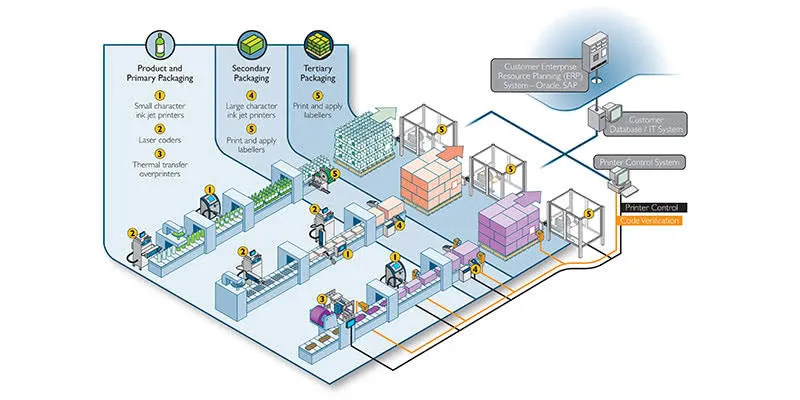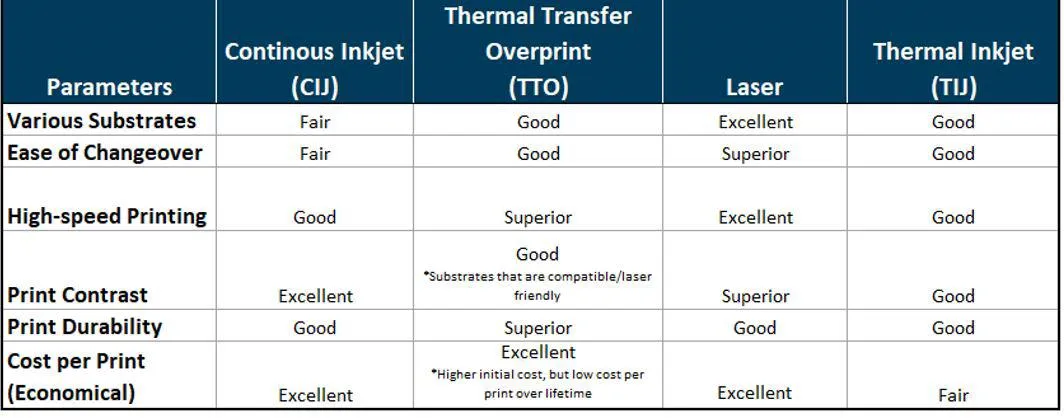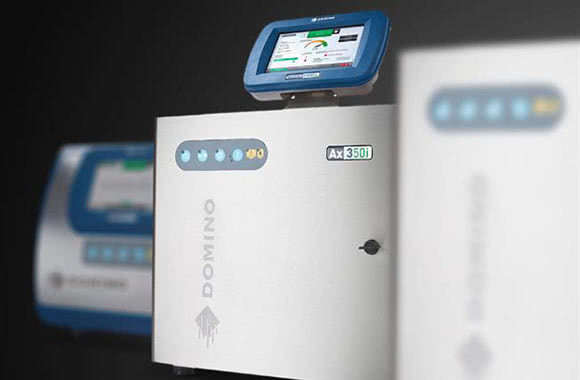Primary packaging coding was revolutionized on June 26, 1974 at 8:01 AM. At Marsh Supermarket in Troy, OH, a 10-pack of Wrigley’s Juicy Fruit gum was the first product ever scanned for purchase. (It was 67 cents if you were wondering.)
After realizing that printing technology at the time could not legibly print IBM’s original circular bullseye format, engineer George Laurer designed the vertical line bar code. This allowed all of their printers—even those from World War I era—the ability to print a machine-readable code (MRC) format without smearing.
George’s Delta B prototype was about 6 inches by 3 inches. This was too large for many grocery items, so George went back to the drawing board. His revised design, Delta C, measured about 1.5 inches by 0.9 inches. This design was proposed, and accepted, by the Symbol Selection committee of the Uniform Grocery Product Code Council, a consortium of grocery stores. Thus, the beginning of the Universal Product Code (UPC).
The UPC may be the most recognizable 1D code, but there are many other formats. Whereas US merchants use UPC, EAN-13 and EAN-8 are typically used by retailers outside the US. Code 39 is used in the automotive and defense industries while ITF-14 may be used for logistics purposes. Regardless of the dataset used, they all have something in common; there needs to be a means to print them product packaging.

Primary, Secondary, and Tertiary Packaging Printing
Package printing, whether it is on food & beverage products, pharmaceutical items, or agricultural goods, can be segmented into three types: Primary, Secondary, or Tertiary printing.
Primary Packaging
Primary packaging is commonly what comes to mind when people think of packaging. Whether that is the aluminum can a beverage was purchased in, the candy bar wrapper, the bag those pretzels came in, or that bottle of wine, primary packaging has direct contact with the product and usually sold in individual units. These packages may be printed with lot codes, date codes, bar codes or other information which may be required by retailers or industry standards.
Secondary Packaging
Secondary packaging is what the individual primary packaged goods are shipped in and used to display the items. An example of this is single candy bars packed in a larger branded case that can be placed at the checkout counter. The codes on these boxes normally contain product tracking information such as batch codes and case quantity rather than information needed at point-of-purchase.
Tertiary Packaging
Tertiary packaging is meant to keep bulk products from being damaged during transportation. Normal tertiary packaging includes shipping crates & boxes, pallets, reels/spools, and shrink wrap. These are typically large - and often odd shaped - items that do not allow them to be easily printed on. Thus, barcodes and other information need are usually applied on printed labels that are affixed to sides of Tertiary packaging.
Other than at the big box stores, Tertiary packaging is rarely seen by consumers and the information printed on it is used entirely by the manufacturer, distribution centers, or the retailer for shipping and receiving purposes.
Factors to consider for Primary Packaging Printing
When considering an industrial printer, there are a several factors that must be identified to determine the right printing technology for the application.
- What is being printed? Clearly determine what information needs to be coded. The message may be a human readable code (HRC) Best Buy Date or Lot Code, machine readable code such as UPC or data matrix codes, or a combination of both. Primary packaged goods mostly consist of 1-2 lines of code. However, due to space limitations or additional data requirements, it could be more.
- How fast do you need to print? Often people think of line-speed when asked about print speed. “I am running 250 feet per minute.” However, this is only one part of the equation. You must also know what the throughput is - how many prints per minute are required. If the line is running 250 feet per minute with the products spread out, the printer may only be printing 1 time per minute. However, if the products are right next to each other - or there is no gap in between - the printer may need to print 20 times per minute.
- What are the printing conditions? Is the facility where the printer is being used hot or cold, dry or wet, humid or arid? Does that change with the seasons or even over the course of a production run? Is it a Class I Div. I area? Are there physical space and/or mounting constraints? The last thing you want to do is purchase a printer only to find out when being installed its too big to fit.
- What is being printed on? Are you printing on glass, plastic, metal, polyethylene (PE), polypropylene (PP) , or… eggshells? (Depending on the operations, it could be ALL of those on the same production line. OK, maybe not eggshells.) Some printers will work with various materials with little to no adjustments, while others, once installed, are dedicated to a specific substrate.
Primary Packaging Printing Technologies
There is not a one-size-fits-all printing technology. However, once it’s determined what type of code is being printed, what is the maximum print speed, and what type/color substrate will be used, the correct printing method can be selected. When it comes to primary packaging printers, there are four types: Laser, Thermal Transfer Overprint (TTO), Thermal Inkjet (TIJ) and Continuous Inkjet (CIJ). Each technology has its own set of advantages for the various substrates and printing environments.

While there have been many advancements in packaging coding over the last 20 years, don’t let a technology with its origins from the 1860’s, fool you. Continuous Inkjet printers provide advantages unmatched by other means of coding and the reason CIJs remain the most widely used primary packaging coder.
Maximum Upkeep, Maximum Colors
Why would anyone want to limit their coding and marking to only a single color? Packaging color combinations are limitless. Black print is acceptable when printing on clear wrappers or white boxes, but not on amber vitamin bottles or dark green soda cans. CIJ inks are available in many different colors which allows superior contrast on practically any color of substrate.
Additionally, CIJ inks are specially formulated for use in harsh applications such as high temperature extrusion lines or flash freezing food environments. (There is even clear, UV-detectable ink used for anti-counterfeiting and brand protection.)
There is a myth that CIJ printers do not provide the resolution required to use barcode verification systems. This may have been true in the 1960’s with Dr. Robert Sweet’s first Inkjet Oscillograph, however this is not true today. CIJ, along with TTO and Industrial Laser printers, can be fully integrated into productions facilities using vision systems.
The CIJ non-contact method prints small codes with a high degree of resolution employing fast-drying fluids at extremely high-speeds on virtually any type of packaging material.

Features to look for when choosing a Continuous Inkjet
- How easy is the unit to use? Make sure the printer comes with an intuitive interface. CIJ are perfect for small batch productions. However, this often means frequent label and message changes. With a clunky, hard-to-use HMI, this makes the changeover process more time consuming than it needs to be. Although some units may seem straight-forward when setting-up a new label, they can be quite cumbersome when needing to make changes to that label.
Additionally, look for a printer that offers a large, detachable HMI. The printer may be installed in a hard-to-reach location making it extremely difficult for the operator to gain access and make the needed message changes. However, having an HMI that can be mounted remotely, the operator may be able make those changes from the main equipment control panel.
- How easy is it to maintain the printer? All printers need maintenance, its just a matter of how much and by who. You don’t want to be held captive by a printer that requires bi-annual replacement of core components by highly-trained (READ: EXPENSIVE) technician when you could have one that can be completely serviced by the operator in less than 10 minutes a year.
- How easy is the unit to Service? What happens when the red light starts flashing and the printer stops printing? There are still printers in the market today that require the maintenance technician to pull out the manual and look-up that cryptic fault code. (Who knows what 0x80070bc2 is off the top of their head?) When researching your next printer purchase, find a printer that offers onboard troubleshooting feedback & fault recovery wizards. Additionally, look for a printer that has an augmented reality option. It’s the next best thing to having an actual tech on-site, but even quicker. With a few swipes of a smartphone, the technician is seeing exactly what you’re seeing and walking you through the steps to get the equipment running again.
If the time comes and you need a service tech, does your printer manufacturer have a dedicated Service Team or must you rely on a third-party provider? That could take days - or weeks - for someone to show up. Do you really have time for the production line sitting idle that long?
Handwriting information on packaging has gone the way of the dinosaur. Since June 26, 1974 with George Laurer’s initial UPC to today’s QR codes to… what is yet to come, the information required to be printed on packages continues to evolve. Continuous inkjet printers offer the most economical coding option while delivering flexibility and reliability in a myriad of printing environments and applications. Thus, future-proofing your coding needs and ensuring CIJ will not go the way of the T-Rex.
If you are looking for advice on your particular packaging application, or want to compare our perfect drop against what you currently use, get in touch with your local Domino Account Manager, or connect with me on LinkedIn or email directly (eric.corzine@domino-na.com).